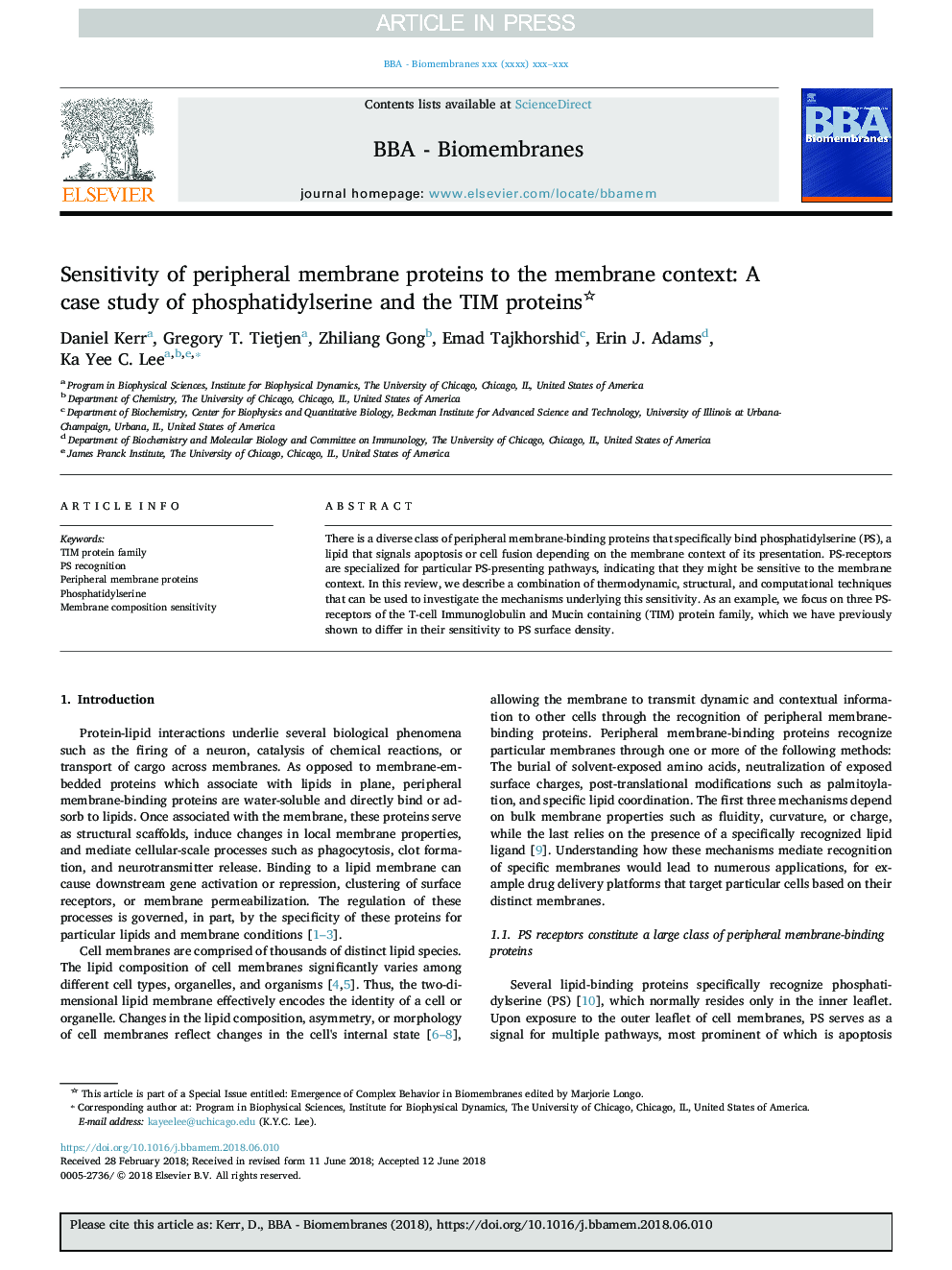| Article ID | Journal | Published Year | Pages | File Type |
|---|---|---|---|---|
| 10156716 | Biochimica et Biophysica Acta (BBA) - Biomembranes | 2018 | 8 Pages |
Abstract
There is a diverse class of peripheral membrane-binding proteins that specifically bind phosphatidylserine (PS), a lipid that signals apoptosis or cell fusion depending on the membrane context of its presentation. PS-receptors are specialized for particular PS-presenting pathways, indicating that they might be sensitive to the membrane context. In this review, we describe a combination of thermodynamic, structural, and computational techniques that can be used to investigate the mechanisms underlying this sensitivity. As an example, we focus on three PS-receptors of the T-cell Immunoglobulin and Mucin containing (TIM) protein family, which we have previously shown to differ in their sensitivity to PS surface density.
Keywords
Related Topics
Life Sciences
Biochemistry, Genetics and Molecular Biology
Biochemistry
Authors
Daniel Kerr, Gregory T. Tietjen, Zhiliang Gong, Emad Tajkhorshid, Erin J. Adams, Ka Yee C. Lee,
